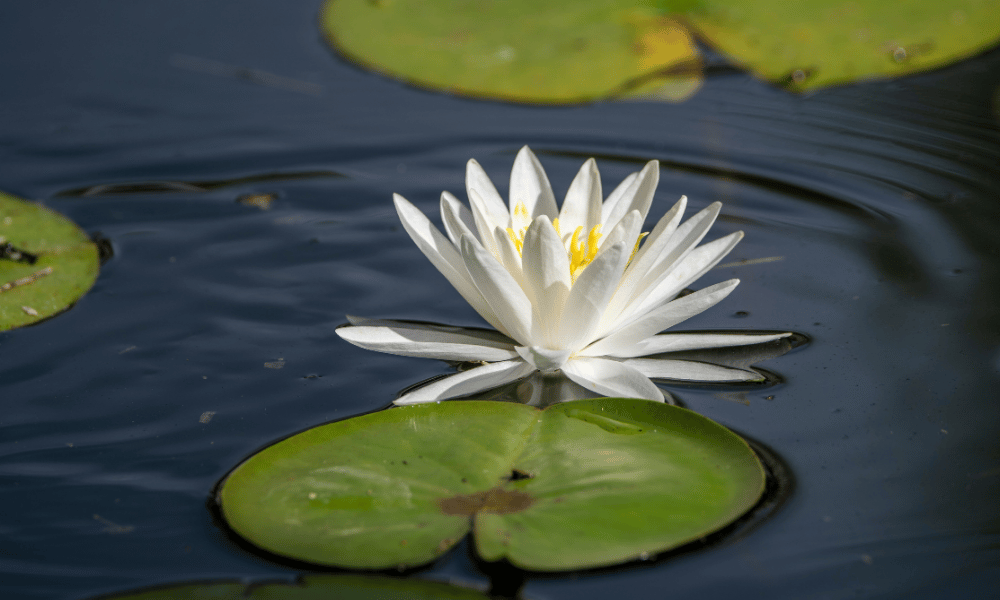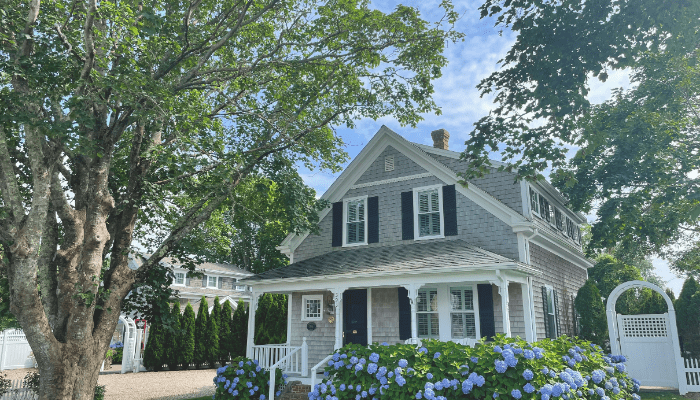Key Takeaways
- Aquatic plants keep ponds healthy: filter, oxygenate, shade, and control algae.
- Four main types: floating, submerged, marginal, emergent.
- Match plants to pond depth, sunlight, and climate.
- Maintain them with baskets, careful fertilizing, pruning, and dividing.
- Top picks: hornwort, water lettuce, marsh marigold, pickerelweed, elodea, water hyacinth, dwarf papyrus, iris pseudacorus, frogbit, water lilies.
- Avoid overplanting, planting too deep, skipping pruning, and using banned species.
- A balanced plant mix creates a low-maintenance, self-sustaining pond.
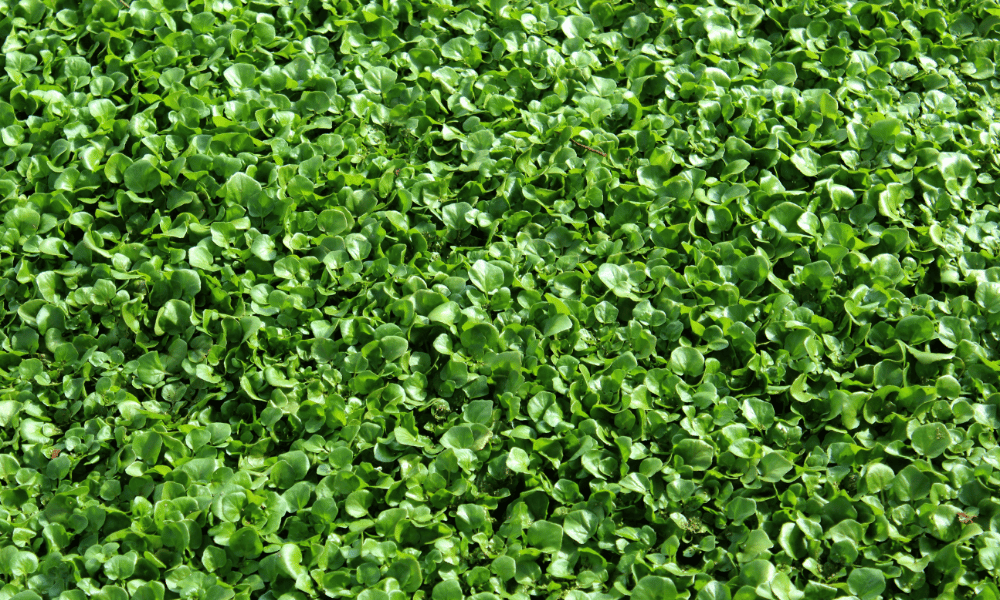
A clear pond isn’t magic. It’s a strategy. Want fewer algae outbreaks? Plant better. Want to stop mosquitoes from turning your water into a daycare? Plant smarter. Want your neighbors to stop asking if your pond is supposed to be that green? Yep, plants.
Aquatic plants do more than just look pretty. They filter, oxygenate, shelter, cool, stabilize. They’re the multitaskers of the pond world, doing five jobs while you drink coffee and pretend you’re going to clean the filter later.
But not all pond plants are created equal. Some thrive in a few inches of water. Others want to be neck-deep. Some float. Others root. Some spread like a rumor, and some need a little help getting started.
In this guide, we’re going straight to what works: the best aquatic plants, how to use them, and how to avoid turning your pond into a swampy mess. You’ll get real advice, plant-by-plant guidance, and no vague “add some lilies and hope” nonsense.
So whether you’re building your first pond or tired of Googling “why is my pond water brown,” you’re in the right place. Let’s plant smart.
Why Aquatic Plants Actually Matter
You can build a pond without plants, but it’s basically an open invitation for algae, mosquitoes, and disappointment. Aquatic plants aren’t optional, they’re functional. They’re the natural filtration system, the shade, the shelter, and the oxygen source. All in one leafy package.
They cool the water by shading it. They keep fish calm and hidden from predators. They block light that fuels algae. And if you’re trying to run your pond without a pump or want to cut back on maintenance, they’re your MVPs.
Still think they’re just decoration? Skip them for a month and enjoy your swamp. Or… don’t.
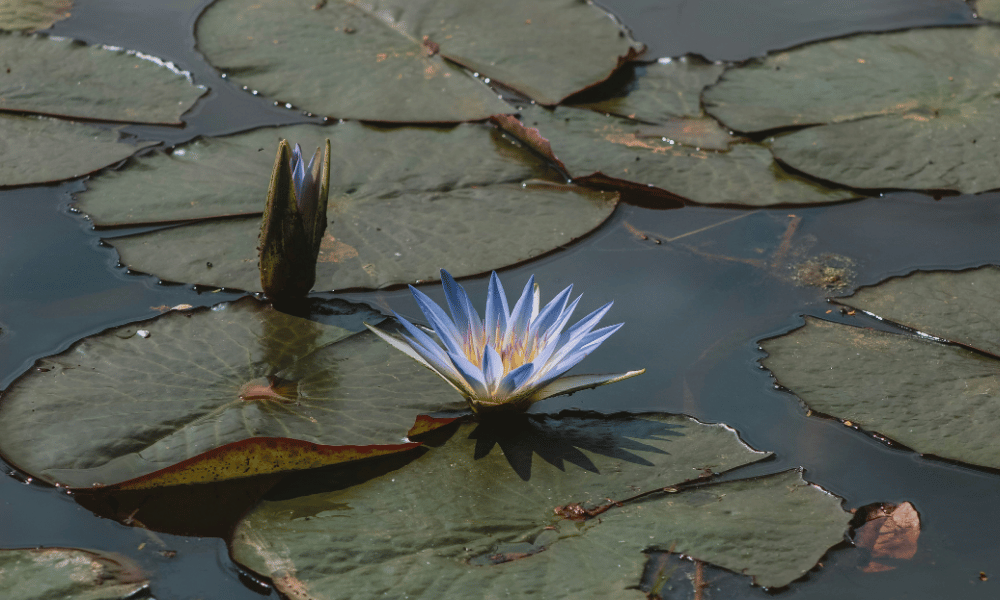
Types of Aquatic Plants for Ponds
Not all aquatic plants are created equal. Some want to float lazily. Others prefer to keep their roots buried and their leaves above water like they’re doing yoga. Here’s how to break it down:
Floating Plants
Zero effort. No soil, no baskets, no digging. Just drop them in and let them cruise.
They float on the surface with their roots dangling below. While they look innocent, they’re quietly blocking sunlight, stealing nutrients from algae, and cooling the water. Think of them as little solar panels with attitude.
Great options:
- Duckweed – Tiny, fast-spreading, and a favorite snack for fish
- Water Lettuce – Rosette-shaped and wildly efficient at sucking up nitrates
- Frogbit – Like lily pads for small ponds. Bonus: great texture
Tips:
Start small. They spread fast. Skim them back if they get too clingy.
Submerged Plants
These live entirely underwater and work full-time as oxygenators. They look simple. But they’re absolute workhorses for water quality.
They’re essential if you want a balanced, pump-free pond. Or just want your koi to stop doing backflips from poor oxygen levels.
Top picks:
- Hornwort – Hardy, fast-growing, and doesn’t even need planting
- Elodea – The gold standard for oxygenation
- Water Milfoil – Feathery foliage, great for fry and insect life
Pro tip: Anchor them with gravel in mesh pots or let them float. Either way, prune regularly or they’ll take over like it’s their job. Because it kind of is.
Marginal Plants
These guys hang out at the edges, roots in shallow water, stems and flowers reaching for the sky.
They’re the bridge between your pond and the surrounding garden. Visually, they soften the transition. Functionally, they stabilize soil, provide cover, and attract pollinators and frogs. Win-win.
Excellent choices:
- Pickerelweed – Striking purple spikes and a pollinator magnet
- Marsh Marigold – Early spring blooms, bright yellow, low maintenance
- Yellow Flag Iris – Tough, native, beautiful and bold
Watch your placement: Marginals like to sit in 2–6 inches of water. Too deep? They sulk. Too shallow? They fry.
Emergent Plants
These are the drama queens. Rooted underwater, but reaching far above it. They create height, texture, and movement, plus they’re great for privacy or building visual interest behind lower-growing plants.
Top picks:
- Cattails – Iconic, but use sparingly (they spread)
- Dwarf Papyrus – Architectural and sculptural
- Water Plantain – Subtle, graceful, easy to manage
These work best around the back edges of your pond or in shallows near retaining walls or planting shelves.
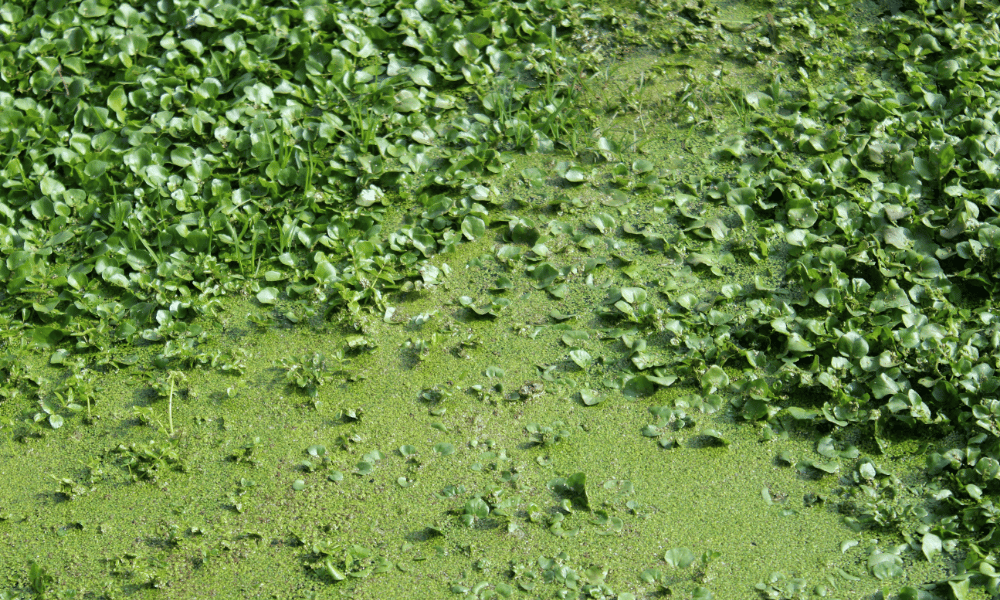
How to Choose the Right Plants for Your Pond
Not every plant works in every pond. Here’s how to choose the right mix without turning your pond into a science experiment gone wrong.
Check Sunlight
Got full sun all day? You’ve got options. Water lilies, floating plants, and fast growers will thrive.
Mostly shade? Stick to shade-tolerant picks like Hornwort and Marsh Marigold. But expect slower growth overall.
Match Depth to Plant Type
Plants don’t like surprises. If they’re meant for 6 inches of water, don’t stick them three feet deep.
Use planting shelves or pots to adjust levels. Or build in shallow zones during pond construction, your plants (and frogs) will thank you.
Think About Wildlife
Want dragonflies? Add vertical plants like pickerelweed.
Want frogs? Provide cover near the edges.
Want to avoid mosquitoes? Use floating plants to cut light and keep the surface active.
Don’t Forget Seasons
Tropical plants look fantastic in summer, then die like drama queens at the first frost.
Hardy plants (like water lilies and Iris pseudacorus) survive winter and come back stronger.
Mix both if you want summer wow and year-round structure.
How to Plant and Maintain Aquatic Plants
Okay, let’s talk logistics. Aquatic plants don’t need soil like your tomatoes do, but they do appreciate good placement.
Use Aquatic Baskets
Mesh baskets lined with hessian or burlap let water flow while holding your plant medium. Fill them with clay or aquatic compost.
Avoid regular garden soil. It’s full of nutrients that’ll send algae into overdrive.
Anchor Submerged Plants
Gravel, small rocks, or pre-weighted bundles work fine. Some plants (like Hornwort) don’t even need anchoring. They’ll float and still do their job.
Fertilize (Carefully)
Use slow-release aquatic tablets, once a month max during the growing season. More is not better. Overfeed your plants, and algae will thank you personally.
Prune, Divide, Replant
Plants grow. That’s great until they grow into a tangled mess.
Trim dying leaves, thin out overgrown clumps, and divide marginals every 1-2 years.
Your pond will look better, and your plants will stay healthy and under control.
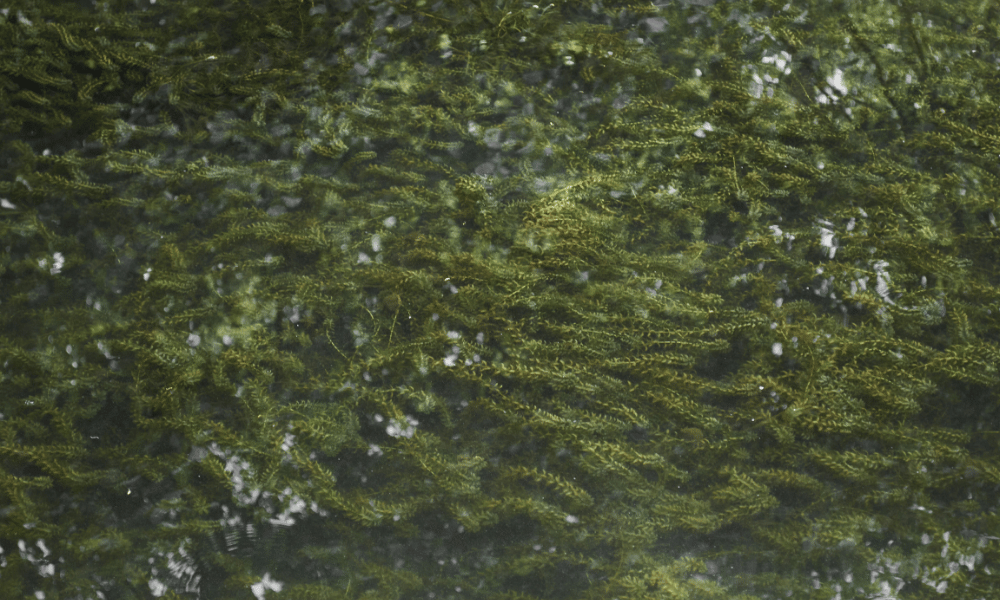
Top 10 Aquatic Plants That Actually Work
Here’s a quick-fire list of plants that won’t waste your time:
- Hornwort – Indestructible and oxygen-rich
- Water Lettuce – Great for surface cover
- Marsh Marigold – Early-season bloom and pollinator appeal
- Pickerelweed – Adds height and color
- Elodea canadensis – Classic submerged plant
- Water Hyacinth – Rapid algae suppression (but watch spread)
- Dwarf Papyrus – Stylish, tropical, works in pots
- Iris pseudacorus – Hardy, striking, low-effort
- Frogbit – Aesthetic floater for small ponds
- Water Lily (Nymphaea) – Not just pretty—they shade and cool the water
Plant five of these, and you’ve covered every zone in your pond.
Common Mistakes Pond Owners Make with Plants
Let’s save you some headaches.
- Overplanting floaters – They spread like gossip. Thin them out monthly.
- Planting too deep – Marginals don’t swim. Use shelves or bricks to lift them.
- Ignoring pruning – Dead leaves rot and feed algae. Snip early, snip often.
- Skipping labels – That cute plant might be banned in your region.
- Buying whatever’s on sale – Choose based on your pond’s size, sun, and depth, not what’s cheapest in the bin.
Get this part right, and the rest of pond maintenance becomes 10x easier.

Conclusion
Aquatic plants aren’t pond accessories. They’re pond infrastructure. The difference between a thriving, low-maintenance water feature and a soupy, algae-ridden science experiment often comes down to what you put in the water and where.
The good news? You don’t need 50 species and a degree in aquatic botany. A handful of the right plants, placed in the right spots, gets you 80% of the way there. Floating plants to block sunlight. Submerged ones to oxygenate. Marginals to anchor the edges and attract wildlife. Done right, they create a self-balancing system that’s beautiful, functional, and surprisingly low-effort.
Start with three types. Mix textures. Observe how they behave over a few weeks. Trim when needed. Tweak placement. Then let nature do its thing.
And if a frog moves in and starts claiming your pond as its own? Congratulations. You nailed it.
Want a healthy pond that takes care of itself?
Oásis Biosistema helps you design low-maintenance, plant-powered water features using the right mix of floating, submerged, and marginal species with no guesswork, no green soup.
FAQ
What are the best plants to put in a pond?
Top pond plants include water lilies, lotus, pickerelweed, irises, hornwort, and water hyacinth. These provide shade, oxygen, and habitat for aquatic life.
What are the best aquatic plants for ponds?
Great choices are water lilies, lotus, hornwort, anacharis, water hyacinth, and water lettuce, offering beauty, oxygenation, and algae control.
What are the best pond plants to keep water clear?
Oxygenating plants like hornwort, anacharis, and waterweed help keep ponds clear by competing with algae for nutrients.
Can you put aquatic plants in a pond?
Yes, aquatic plants thrive in ponds, improving oxygen levels, supporting wildlife, and reducing algae through natural filtration.

